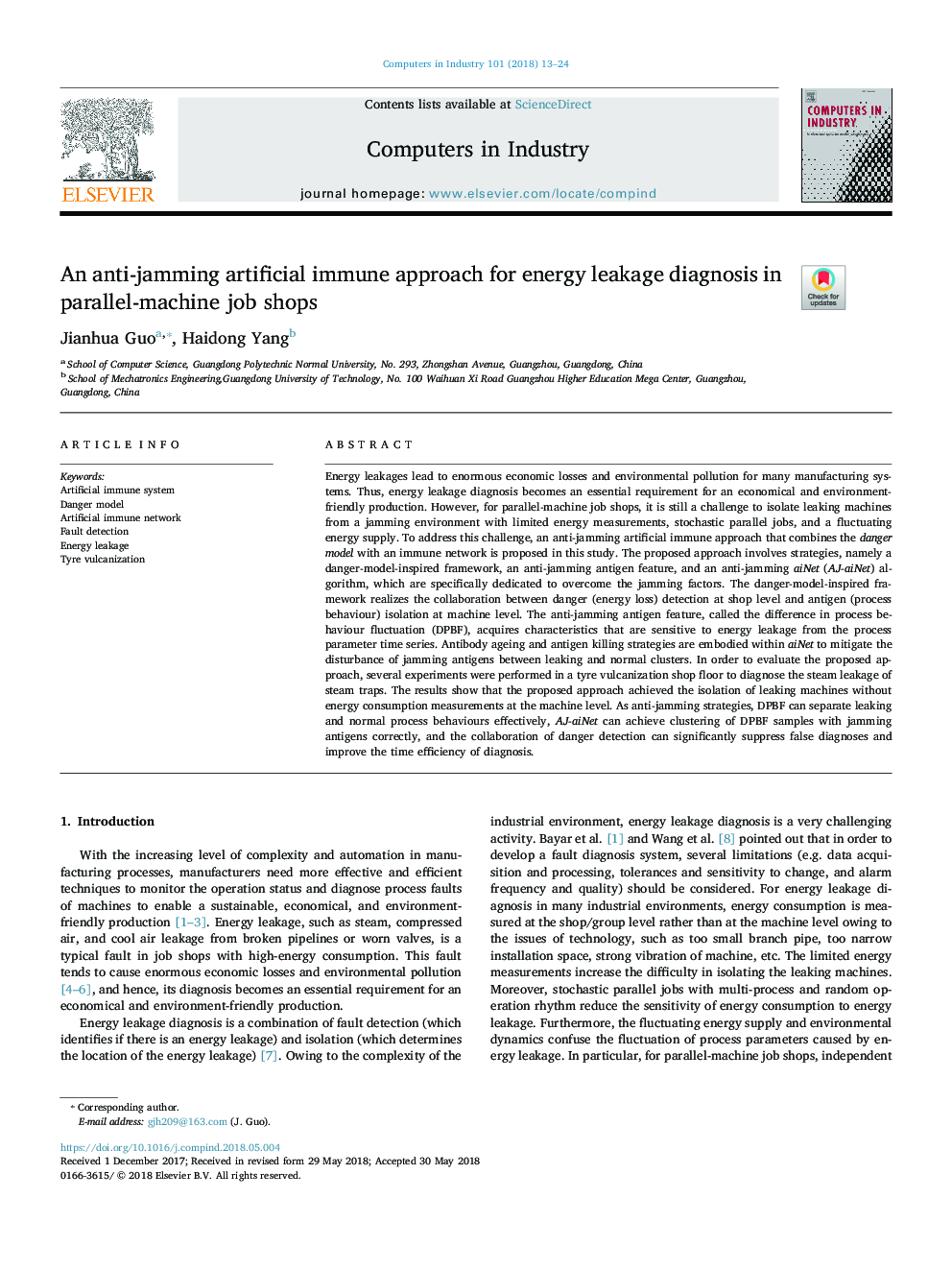| Article ID | Journal | Published Year | Pages | File Type |
|---|---|---|---|---|
| 6923551 | Computers in Industry | 2018 | 12 Pages |
Abstract
Energy leakages lead to enormous economic losses and environmental pollution for many manufacturing systems. Thus, energy leakage diagnosis becomes an essential requirement for an economical and environment-friendly production. However, for parallel-machine job shops, it is still a challenge to isolate leaking machines from a jamming environment with limited energy measurements, stochastic parallel jobs, and a fluctuating energy supply. To address this challenge, an anti-jamming artificial immune approach that combines the danger model with an immune network is proposed in this study. The proposed approach involves strategies, namely a danger-model-inspired framework, an anti-jamming antigen feature, and an anti-jamming aiNet (AJ-aiNet) algorithm, which are specifically dedicated to overcome the jamming factors. The danger-model-inspired framework realizes the collaboration between danger (energy loss) detection at shop level and antigen (process behaviour) isolation at machine level. The anti-jamming antigen feature, called the difference in process behaviour fluctuation (DPBF), acquires characteristics that are sensitive to energy leakage from the process parameter time series. Antibody ageing and antigen killing strategies are embodied within aiNet to mitigate the disturbance of jamming antigens between leaking and normal clusters. In order to evaluate the proposed approach, several experiments were performed in a tyre vulcanization shop floor to diagnose the steam leakage of steam traps. The results show that the proposed approach achieved the isolation of leaking machines without energy consumption measurements at the machine level. As anti-jamming strategies, DPBF can separate leaking and normal process behaviours effectively, AJ-aiNet can achieve clustering of DPBF samples with jamming antigens correctly, and the collaboration of danger detection can significantly suppress false diagnoses and improve the time efficiency of diagnosis.
Related Topics
Physical Sciences and Engineering
Computer Science
Computer Science Applications
Authors
Jianhua Guo, Haidong Yang,
